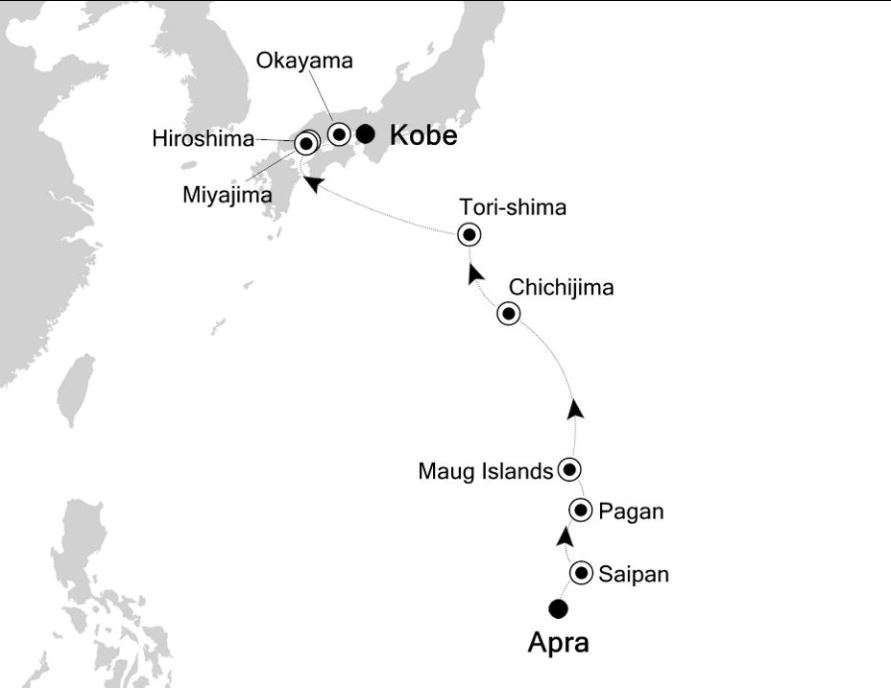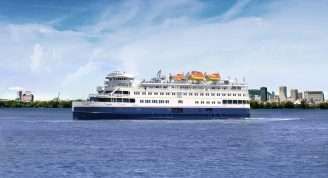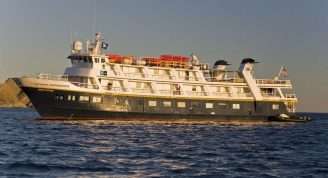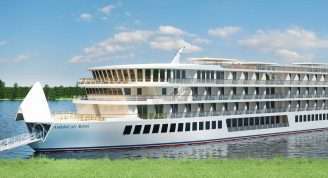Description
Starting in Guam, Silver Explorer will sail through the Northern Marianas and Japan’s southern islands to finally reach Kobe. This nature-laden voyage will lead you from active volcanoes to tranquil gardens, and will also shed light on the history of the final stages of World War II in the Pacific. See UNESCO World Heritage Sites and others that are considered among the most famous views or sites in Japan. Visit Japan’s “Galapagos of the East” around Chichi-Jima and pay your respects to World War II’s sombre history at the Peace Memorial Park in Hiroshima. Visit one of Japan’s three famous gardens and photograph the scarlet “floating” torii gate on this sweeping journey by sea. Throughout the voyage, learn about the history, geology, wildlife and botany of these locations from lecture presentations offered by your knowledgeable onboard Expedition Team.



















